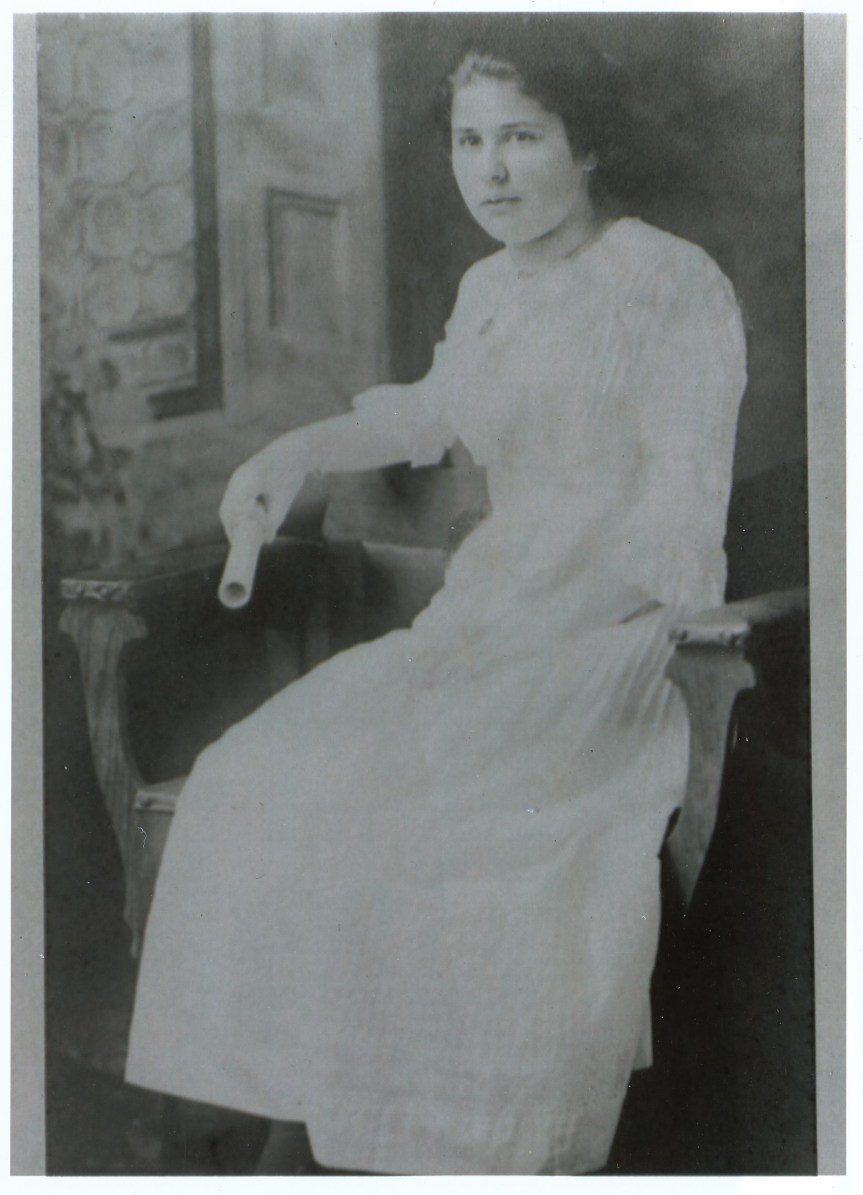17-year-old Helena Muffly wrote exactly 100 years ago today:
Friday, June 21, 1912: I’ve been thinking over an article I read in a magazine. It is about reducing a speck. I think I’ll try it at least, and be less of a pumpkin than what I am now.

Her middle-aged granddaughter’s comments 100 years later:
It sounds like Grandma needed to lose a few pounds—or at least that she thought that she did.
A hundred years ago people believed that the best way to lose weight was to eat “dainty” foods and to chew food more thoroughly. They thought that they would lose weight if they chewed each bite 30 times, 40 times, or even more, before swallowing. This was often called Fletcherizing.
At dinner last night I tried chewing each bite 35 times. The sandwich and potatoes (oops–they may not be dainty foods) that I was eating liquefied in my mouth and it lost all flavor long before the 35th bite.
My family finished eating while I still had lots of food left on my plate.
I don’t think that I could Fletcherize my food meal after meal—but I do think that I’d lose weight if I did it consistently.
Previous Posts on Dieting and Obesity
I’ve been reading a book written in 1892 and it it the author talks about losing weight. I was quite impressed with her suggestions. The first one was exercise, “never lie down during the day”. The other was to limit portions, particularly of “farinaceous foods (wheat, rye, oatmeal, rice, Irish potatoes, sago etc.”. She strongly discourages woman from using the “anti-fat nostrums” on the market. Sounds like an article from a magazine today! Eat less, exercise more and don’t think that there’s a quick-fix pill that actually works.
It does sound like good advice–some things never change. I love the phrase anti-fat nostrums.
Fascinating. Never heard of a ‘speck’ before but I’m sure I could do with reducing a few too!!
I know that years ago I heard people use the term speck to mean a little, though my daughter also said that she’d never heard speck used in that way. It must be archaic, Pennsylvania slang.
Charming phrase: “a speck.” And here I didn’t think women worried about that until the 1920s! The turn of the century was the era of the hourglass figure, or so I thought. Maybe she thought she had a few too many specks of sand in the vessel 🙂
Yes, I think it was the end of the era of heavy corsets and hour glass figures. I’ve seen several articles in 1912 magazines about how bad corsets were for a woman’s health.
My mother often used the term “a speck” to mean just a tiny bit of anything. She was born and raised in Wisconsin of Norwegian background, born in 1905.
It must have been a commonly used term years ago.
I agree with you, she doesn’t look like she needs to diet. You may be right that the photo was taken after she had lost a “speck”. Great article and I love the photo! Beautiful!
Thanks! I’m glad you enjoyed the post.
Although your grandmother has a round face, she doesn’t look at all overweight in the above photo. The only use of speck we used was “a speck of dirt.”
It’s interesting how today the word speck is almost always followed by the preposition “of dirt.” It’s seems like speck was once a stand-alone word.
Yep, I’m familiar with this notion Sheryl but didn’t know it had a name. My understanding is that it’s actually about timing… i.e. your body/ brain takes time to register that enough food’s been consumed. Gulping food =”full” message not yet received = over-eating = obesity. True? I have no idea… QUESTION, looking for an answer: do fat people “gulp” their food down? …
It makes sense that it takes time for the body to register that enough food has been eaten. The idea about eating slowly was similar both then and now–the explanation was just different.
I think that every young girl goes through a period of time when they feel like they are a “pumpkin”. I can’t imagine with all the work she had to do that she kept up her diet for very long.
I remember my Mom telling me to chew each bite a number of times… I forget how many. She also tole me to brush my hair with 100 strokes… so some of this “wisdom” came down through the years.
I can also remember being told to chew my food thoroughly when I was a child.
I’ve always been used to the term “speck”… It’s exactly how I would have used it too in my normal speach. I never noticed anything till I read the comments below.
The word speck also seemed like a common word to me until others commented on it.
HI Sheryl. This is a beautiful picture of your grandmother. It’s amazing how we all view ourselves at various times in our lives. I appreciate the research that you do for these posts! Thanks!
You’re so right that how we view ourselves changes over the years. When I look at old photos of myself I think that I looked awesome when I was a teen–but I sure didn’t think that when I was young. 🙂
I can really relate to that comment 🙂
Beautiful photo of “a speck of a girl” with her hard-earned diploma in hand!
During the school year Grandma worried in the diary so much about whether she was going to pass. It’s nice to have visual proof that she will graduate in another year.
Funny…I am usually the last one eating…but it hasn’t helped me…not one speck! I think Grandma was a pretty slender pumpkin! A beautiful lady and photo1